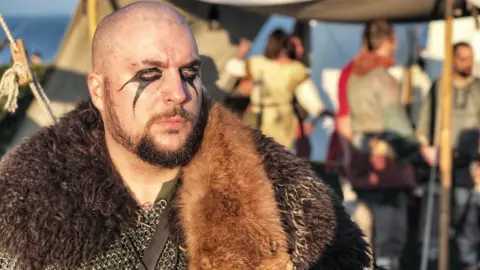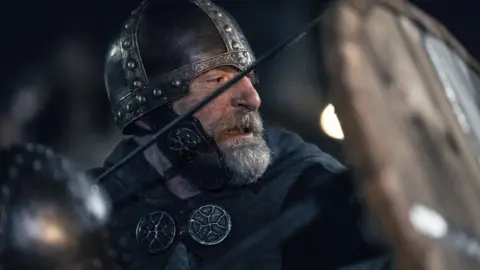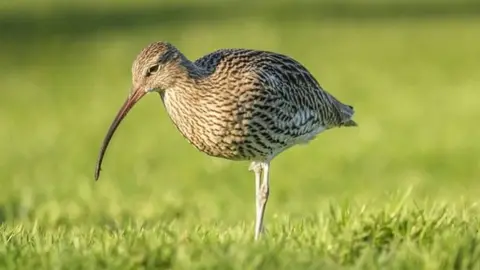Project breathes new life into Early Irish and Old Norse
 BBC
BBCSwords, horned helmets and long boats - we share a picture of the Vikings dating back to primary school projects.
But history is missing the soundtrack to their world. Their words, songs and music are lost to us.
Now, a pioneering project aims to breathe new life into Early Irish and Old Norse.
Musicians, historians and literary scholars are coming together to trace the sonic footprints left by the Vikings and Celts.
Augmented Vocality: Recomposing the Sounds of Early Irish and Old Norse is a project led by experts at Royal Birmingham Conservatoire, part of Birmingham City University,
 PA Media
PA MediaThey are working with the Department of Anglo-Saxon, Norse and Celtic at the University of Cambridge and three European contemporary music ensembles.
Hard Rain Soloist Ensemble based at Queen's University in Northern Ireland is joined by Birmingham Contemporary Music Group (BCMG) in England and BIT20 Ensemble in Norway.
The teams aim to apply powerful new vocal processing and live electronic music technology to develop new insights into the languages by reanimating surviving texts.
Then they shall weave sounds into new compositions for performance.
"For many people, phrases such as 'the early medieval period' and 'the Viking age' conjure a mental landscape of swords, helmets, longboats and thatched huts," said Professor Lamberto Coccioli, associate principal of Royal Birmingham Conservatoire and the project lead.
 Carnival/BBC
Carnival/BBC"It is a shared visual imagination that encompasses primary school projects, the historically-inspired fantasy world of Tolkien and popular series such as Vikings and The Last Kingdom.
"But what do we really know about the sounds accompanying all this imagery?"
Prof Coccioli's team will be looking at the sounds and poetic texts from early Nordic language and exploring what happens when voices from a distant past collide with contemporary music performance.
"Can we bring back to life for modern audiences the original expressive power and immediacy of those ancient voices?" he asked.
"Composer Edmund Hunt and I are really excited by this challenge and look forward to delivering our findings with colleagues at Royal Birmingham Conservatoire, University of Cambridge and three leading new music ensembles."
Last year, academics in Northern Ireland and England unveiled a new online dictionary of medieval Irish.
It was the culmination of five years of painstaking work by experts from Cambridge University and Queen's University.
They pored over manuscripts and texts for words which have been overlooked or mistakenly defined.
Their findings can now be freely accessed in the revised version of the online dictionary of medieval Irish.
Among the words brought back to life in this project are "ogach", which means "eggy" - but in a good way: If you were choosing where to live in medieval Ireland you would want somewhere ogach - "abounding in eggs".
 Getty Images
Getty ImagesOn the other hand it is probably bad news if you hear the word "brachaid", meaning: "It oozes pus."
The scholars discovered quirky words such as "séis" - an old Irish word for a six-day week.
The dictionary of medieval Irish is 23 volumes long. It spans a period from 700 to 1700.
For Prof Greg Toner from Queen's University Belfast, finding and documenting the words has been a labour of love spanning nearly 20 years.
"People think it is an old language and there are no new words, but our interpretation changes," he said.
"We found about 500 words that have not been recorded. Among them is the word "séis", which means a period of six days.
"This is great, if you can't be bothered working a full week."
Other words include the Irish for curlew - "crottach" or "the humped one" - and might be an allusion to the bird's distinctive beak.
On the other hand, leprechauns may be considered quintessentially Irish, but research suggests this perception is blarney.
The word "leprechaun" is not a native Irish one, scholars have said.
